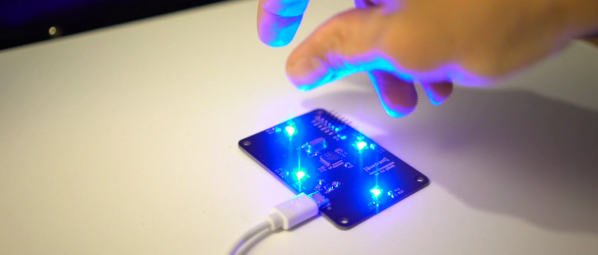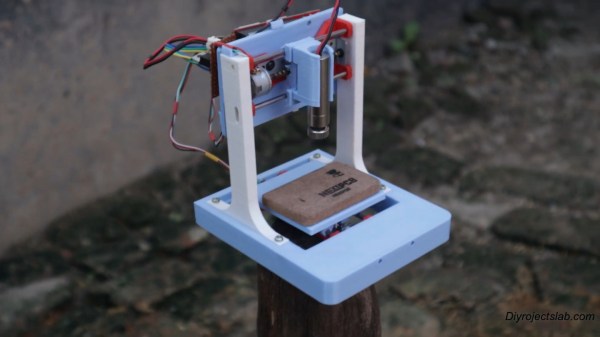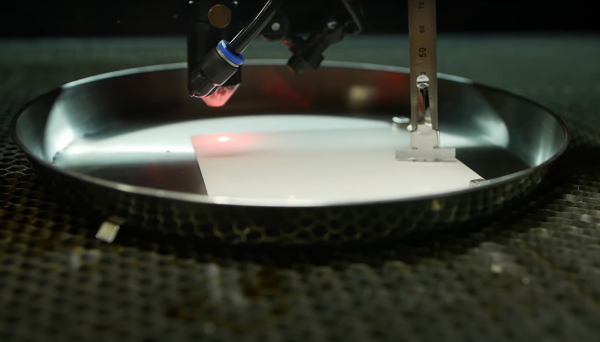Suppose you were looking for all the essential elements to make a great Halloween-themed shooting game. Zombies? Check. Giant “lasers”? Check. Crossbows shooting forks? We’ve got you covered. Check out “Fork The Zombies“, which was set up by [piles.of.spam] to entertain the neighborhood kids this Halloween.
The game is played on a big screen, which shows a horde of angry zombies marching toward the player, who has to shoot as many as possible before they reach the front of the screen. The weapon provided is a crossbow; when the trigger is pulled, a fork is launched and hopefully skewers one of the ghouls. The game was written using an open-source engine called Urho3D, which takes care of all the hard-core 3D and physics work, allowing the user to focus on designing the gameplay and visuals.
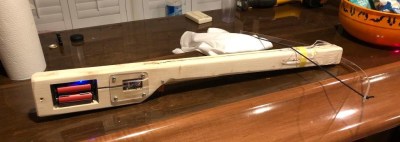 To give the game a bit more of a physical feel, [piles.of.spam] made an actual crossbow for the player to wield. Its handle was cut from a scrap piece of wood, using a band saw for the general shape and a CNC machine for the delicate cut-outs that hold a laser pointer, an ESP32 and a microswitch-based trigger. The laser shines onto the game screen, while the ESP32 sends out a data packet over WiFi when the trigger is pulled.
To give the game a bit more of a physical feel, [piles.of.spam] made an actual crossbow for the player to wield. Its handle was cut from a scrap piece of wood, using a band saw for the general shape and a CNC machine for the delicate cut-outs that hold a laser pointer, an ESP32 and a microswitch-based trigger. The laser shines onto the game screen, while the ESP32 sends out a data packet over WiFi when the trigger is pulled.
The location of the shot is tracked using a clever trick: a webcam is pointed at the screen, with a red color filter in front. This way, it only sees the red laser dot moving across the screen. The resulting image is processed using the Python OpenCV library, which provides functions to convert the relative motion of the pointer on the screen to an absolute position along the playing field.
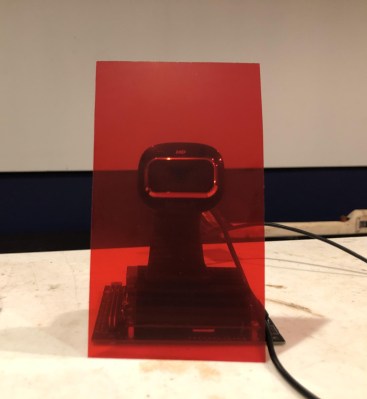 The computing hardware consists of a pair of Jetson Nano boards, which sport quad-core ARM A57 CPUs as well as powerful graphics hardware to generate the game’s visuals. The end result is impressive, especially given the fact that all of this was designed and built in just three weeks. It was apparently a great hit with its intended audience, as visitors queued to try their hand at shooting the hungry zombies.
The computing hardware consists of a pair of Jetson Nano boards, which sport quad-core ARM A57 CPUs as well as powerful graphics hardware to generate the game’s visuals. The end result is impressive, especially given the fact that all of this was designed and built in just three weeks. It was apparently a great hit with its intended audience, as visitors queued to try their hand at shooting the hungry zombies.
Laser pointers are an obvious tool for creating shooting games: we’ve seen ones with a single round target, a set of shapes set up around you, and even metal cans that fall over and stand up again. But if you need to protect yourself in case of an actual zombie apocalypse, a slingshot that shoots knives might be more useful.
Continue reading “Halloween Game Lets You Shoot Zombies With A Laser-Powered Crossbow” →

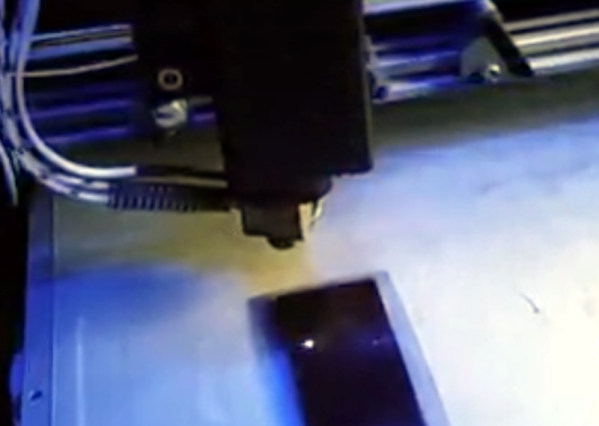
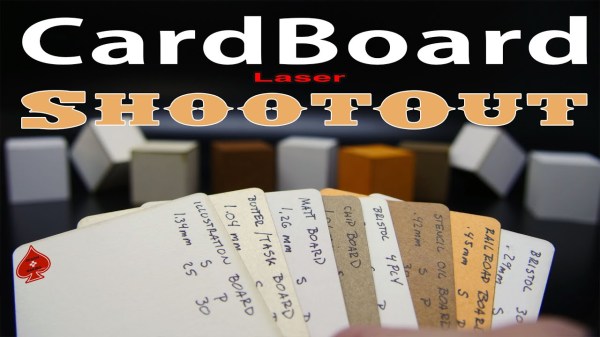
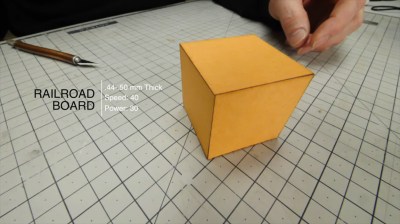

 To give the game a bit more of a physical feel, [piles.of.spam] made an actual crossbow for the player to wield. Its handle was cut from a scrap piece of wood, using a band saw for the general shape and a CNC machine for the delicate cut-outs that hold a laser pointer, an ESP32 and a microswitch-based trigger. The laser shines onto the game screen, while the ESP32 sends out a data packet over WiFi when the trigger is pulled.
To give the game a bit more of a physical feel, [piles.of.spam] made an actual crossbow for the player to wield. Its handle was cut from a scrap piece of wood, using a band saw for the general shape and a CNC machine for the delicate cut-outs that hold a laser pointer, an ESP32 and a microswitch-based trigger. The laser shines onto the game screen, while the ESP32 sends out a data packet over WiFi when the trigger is pulled. The computing hardware consists of a pair of Jetson Nano boards, which sport quad-core ARM A57 CPUs as well as powerful graphics hardware to generate the game’s visuals. The end result is impressive, especially given the fact that all of this was designed and built in just three weeks. It was apparently a great hit with its intended audience, as visitors queued to try their hand at shooting the hungry zombies.
The computing hardware consists of a pair of Jetson Nano boards, which sport quad-core ARM A57 CPUs as well as powerful graphics hardware to generate the game’s visuals. The end result is impressive, especially given the fact that all of this was designed and built in just three weeks. It was apparently a great hit with its intended audience, as visitors queued to try their hand at shooting the hungry zombies.
